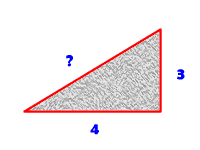Hey guys! Jeoffrey here. I am here to teach you how to divide a polynomial by a binomial. There are 2 ways to divide a polynomial by a binomial:
long division and
synthetic division. The first way we are going to look at it
long division.
Long Division
Do you guys remember the terms divisor, dividend, quotient, and remainder? Well, if you don't here is a quick reminder.
Dividend is the number we want to be divided, divisor is the number we are dividing by, quotient is the result of the division, and remainder is the left over after all of the calculations.
Now, in the example above, we see that we are doing the question 9÷4. The first step we need to do is divde 4 by 9, and see what is the closest whole number that we get as a result. We see that the answer is 2. So we put that as our quotient. Next, we multiply 4 and 2 together, get 8, and then do 9-8, to see if there will be a remainder at the end. We see that there is a remainder of 1, so we state that in our final answer.
With polynomials, it is the same thing. lets say we have (5n²+33n-22)÷(n+7). First, we would format it like any other long divison question.
First, we would first do (5n²÷n) in order to get the first part of our quotient. once we get that, we take that quotient, in this case 5n, and multiply it with (n+7). Then we take our answer, 5n²+35 and subract it from 5n²+33. In the end, we will be left with -2.
**note: even though (5n)(7)=35n, it turns to negative because we always subtract when doing long division. same thing with the 5n². It turns into -5n²
After this step, you take your answer from the previous step and divide it by n to get the next part of your quotient. In this case, it would be (-2n)÷n= -2
From there, you would bring down the (-22) and put it beside the -2n. Then, you would repeat the previous step where you would take -2 and multiply it by the divisor, and then take that answer and subtract it from (33n-22) in order to see if there is a remainder. In this case, (-2)x(n+7)= -2n-14. Following this, (33n-22)-(-2n-14)= -8
Finally, in order to state our answer, we re-write the question, then state our quotient as our answer. if there is a remainder, in this case, (-8), then we write is as the quotient+ R/(x-a) or the quotient multiplied by (x-a)+R.
**note. Since the remainder is (-8), and the (x-a) is (n+7), then the equation changes to quotient-R/n=7 or quotient*(n+7)-8
Synthetic Division
The other way to divde is called synthetic division. It is kind of similar to long division, but it is a lot easier and quicker to do. Let's say we are given the question (2x³+3x²-4x+15)÷(x+3)
The first thing you need to do is determine your a value. To do this, you put your divisor equal to zero, and solve for x. That will be your "a" value.
Next, when you format your synthetic division, it is kind of like long division, except you put your a value on the outside (where the quotient usually goes), and then you put the coefficient in front of each term in the dividend inside (instead of the whole dividend) **note: make sure you don't forget your positives and negative!!
Once you format this, you bring down the first coefficient. ( because you don't have to multiply by anything yet). In this case, we bring down the 2. Once we do that, we multiply the 2 with our "a" value, which is -3, and then put our answer under the next coefficient. From here, we just add the coefficient, which in this case is a 3, and the -6 together.
**Note: make sure you are adding the 3 and -6 together. ( In synthetic division, we add, where as long division, we are subtracting.
Once we get -3 as an answer, we repeat the previous step, but we would multiply our "a"value, (-3) with the answer we just got, (-3). From this, we would go (-3*-3) to get 9, then add that to -4 to get 5. Then we do the same thing again; multiply 5 with (-3, which is our "a" value) to get -15. And then we add 15 and (-15) together to get 0.
**Note: the last digit when you are using synthetic division is your remainder, and the number before the remainder is your constant!
Now, after you have done all of these calculations, you would look at your original equation, take the x's with their exponents, and reduce all of their powers by 1. In this case, since it was x³+x²+x, it would turn into just x²+x. Once you do that, you take the answers that you got from the synthetic calculations, and put them in as your new coefficients for the x-values with the reduced power.
In this case, it would look like 2x²-3x+5 as your final answer!!
Thanks for reading my blog! I hoped you learned how to divide polynomials with a binomial! :D
BYE!!!!!!!!!!!!!!!!!!





.jpeg)


































